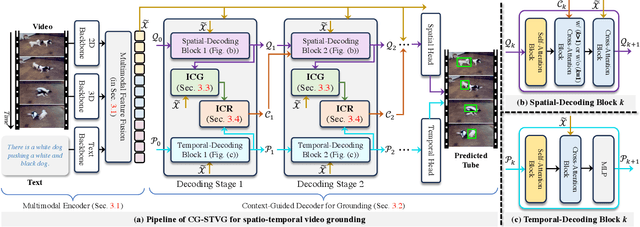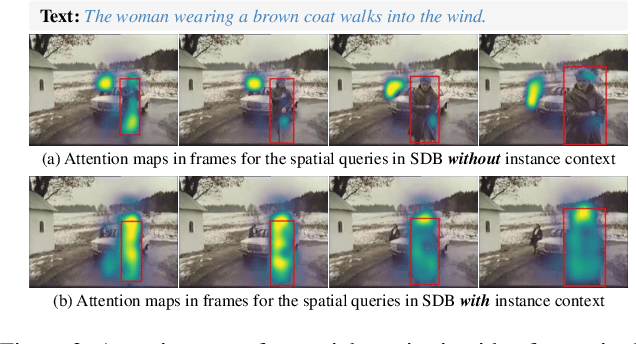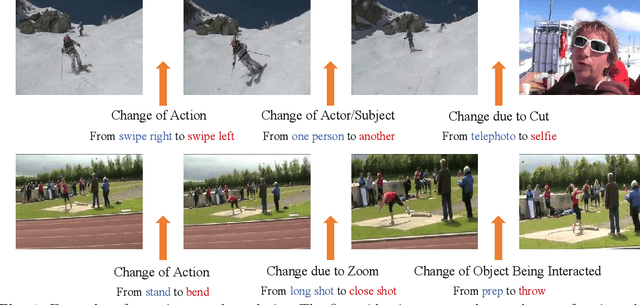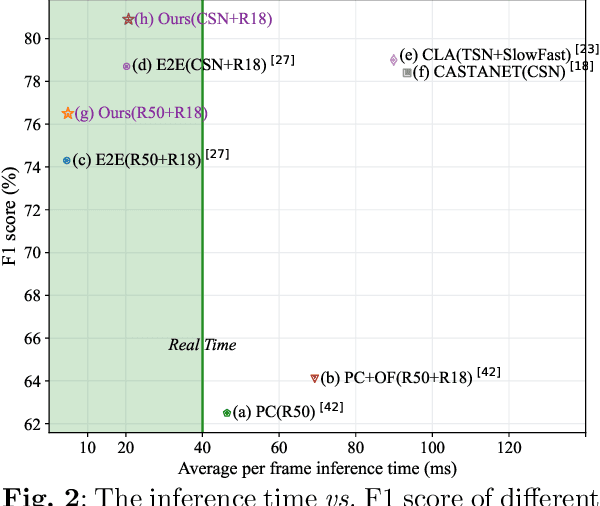Xin Gu
Cocoon: A System Architecture for Differentially Private Training with Correlated Noises
Oct 08, 2025Abstract:Machine learning (ML) models memorize and leak training data, causing serious privacy issues to data owners. Training algorithms with differential privacy (DP), such as DP-SGD, have been gaining attention as a solution. However, DP-SGD adds a noise at each training iteration, which degrades the accuracy of the trained model. To improve accuracy, a new family of approaches adds carefully designed correlated noises, so that noises cancel out each other across iterations. We performed an extensive characterization study of these new mechanisms, for the first time to the best of our knowledge, and show they incur non-negligible overheads when the model is large or uses large embedding tables. Motivated by the analysis, we propose Cocoon, a hardware-software co-designed framework for efficient training with correlated noises. Cocoon accelerates models with embedding tables through pre-computing and storing correlated noises in a coalesced format (Cocoon-Emb), and supports large models through a custom near-memory processing device (Cocoon-NMP). On a real system with an FPGA-based NMP device prototype, Cocoon improves the performance by 2.33-10.82x(Cocoon-Emb) and 1.55-3.06x (Cocoon-NMP).
Generalized Scattering Matrix Framework for Modeling Implantable Antennas in Multilayered Spherical Media
Jul 17, 2025Abstract:This paper presents a unified and efficient framework for analyzing antennas embedded in spherically stratified media -- a model broadly applicable to implantable antennas in biomedical systems and radome-enclosed antennas in engineering applications. The proposed method decouples the modeling of the antenna and its surrounding medium by combining the antenna's free-space generalized scattering matrix (GSM) with a set of extended spherical scattering operators (SSOs) that rigorously capture the electromagnetic interactions with multilayered spherical environments. This decoupling enables rapid reevaluation under arbitrary material variations without re-simulating the antenna, offering substantial computational advantages over traditional dyadic Green's function (DGF)-based MoM approaches. The framework supports a wide range of spherical media, including radially inhomogeneous and uniaxially anisotropic layers. Extensive case studies demonstrate excellent agreement with full-wave and DGF-based solutions, confirming the method's accuracy, generality, and scalability. Code implementations are provided to facilitate adoption and future development.
SuperEdit: Rectifying and Facilitating Supervision for Instruction-Based Image Editing
May 05, 2025Abstract:Due to the challenges of manually collecting accurate editing data, existing datasets are typically constructed using various automated methods, leading to noisy supervision signals caused by the mismatch between editing instructions and original-edited image pairs. Recent efforts attempt to improve editing models through generating higher-quality edited images, pre-training on recognition tasks, or introducing vision-language models (VLMs) but fail to resolve this fundamental issue. In this paper, we offer a novel solution by constructing more effective editing instructions for given image pairs. This includes rectifying the editing instructions to better align with the original-edited image pairs and using contrastive editing instructions to further enhance their effectiveness. Specifically, we find that editing models exhibit specific generation attributes at different inference steps, independent of the text. Based on these prior attributes, we define a unified guide for VLMs to rectify editing instructions. However, there are some challenging editing scenarios that cannot be resolved solely with rectified instructions. To this end, we further construct contrastive supervision signals with positive and negative instructions and introduce them into the model training using triplet loss, thereby further facilitating supervision effectiveness. Our method does not require the VLM modules or pre-training tasks used in previous work, offering a more direct and efficient way to provide better supervision signals, and providing a novel, simple, and effective solution for instruction-based image editing. Results on multiple benchmarks demonstrate that our method significantly outperforms existing approaches. Compared with previous SOTA SmartEdit, we achieve 9.19% improvements on the Real-Edit benchmark with 30x less training data and 13x smaller model size.
Vidi: Large Multimodal Models for Video Understanding and Editing
Apr 22, 2025Abstract:Humans naturally share information with those they are connected to, and video has become one of the dominant mediums for communication and expression on the Internet. To support the creation of high-quality large-scale video content, a modern pipeline requires a comprehensive understanding of both the raw input materials (e.g., the unedited footage captured by cameras) and the editing components (e.g., visual effects). In video editing scenarios, models must process multiple modalities (e.g., vision, audio, text) with strong background knowledge and handle flexible input lengths (e.g., hour-long raw videos), which poses significant challenges for traditional models. In this report, we introduce Vidi, a family of Large Multimodal Models (LMMs) for a wide range of video understand editing scenarios. The first release focuses on temporal retrieval, i.e., identifying the time ranges within the input videos corresponding to a given text query, which plays a critical role in intelligent editing. The model is capable of processing hour-long videos with strong temporal understanding capability, e.g., retrieve time ranges for certain queries. To support a comprehensive evaluation in real-world scenarios, we also present the VUE-TR benchmark, which introduces five key advancements. 1) Video duration: significantly longer than existing temporal retrival datasets, 2) Audio support: includes audio-based queries, 3) Query format: diverse query lengths/formats, 4) Annotation quality: ground-truth time ranges are manually annotated. 5) Evaluation metric: a refined IoU metric to support evaluation over multiple time ranges. Remarkably, Vidi significantly outperforms leading proprietary models, e.g., GPT-4o and Gemini, on the temporal retrieval task, indicating its superiority in video editing scenarios.
OmniSTVG: Toward Spatio-Temporal Omni-Object Video Grounding
Mar 13, 2025Abstract:In this paper, we propose spatio-temporal omni-object video grounding, dubbed OmniSTVG, a new STVG task that aims at localizing spatially and temporally all targets mentioned in the textual query from videos. Compared to classic STVG locating only a single target, OmniSTVG enables localization of not only an arbitrary number of text-referred targets but also their interacting counterparts in the query from the video, making it more flexible and practical in real scenarios for comprehensive understanding. In order to facilitate exploration of OmniSTVG, we introduce BOSTVG, a large-scale benchmark dedicated to OmniSTVG. Specifically, our BOSTVG consists of 10,018 videos with 10.2M frames and covers a wide selection of 287 classes from diverse scenarios. Each sequence in BOSTVG, paired with a free-form textual query, encompasses a varying number of targets ranging from 1 to 10. To ensure high quality, each video is manually annotated with meticulous inspection and refinement. To our best knowledge, BOSTVG is to date the first and the largest benchmark for OmniSTVG. To encourage future research, we introduce a simple yet effective approach, named OmniTube, which, drawing inspiration from Transformer-based STVG methods, is specially designed for OmniSTVG and demonstrates promising results. By releasing BOSTVG, we hope to go beyond classic STVG by locating every object appearing in the query for more comprehensive understanding, opening up a new direction for STVG. Our benchmark, model, and results will be released at https://github.com/JellyYao3000/OmniSTVG.
Multi-Reward as Condition for Instruction-based Image Editing
Nov 06, 2024
Abstract:High-quality training triplets (instruction, original image, edited image) are essential for instruction-based image editing. Predominant training datasets (e.g., InsPix2Pix) are created using text-to-image generative models (e.g., Stable Diffusion, DALL-E) which are not trained for image editing. Accordingly, these datasets suffer from inaccurate instruction following, poor detail preserving, and generation artifacts. In this paper, we propose to address the training data quality issue with multi-perspective reward data instead of refining the ground-truth image quality. 1) we first design a quantitative metric system based on best-in-class LVLM (Large Vision Language Model), i.e., GPT-4o in our case, to evaluate the generation quality from 3 perspectives, namely, instruction following, detail preserving, and generation quality. For each perspective, we collected quantitative score in $0\sim 5$ and text descriptive feedback on the specific failure points in ground-truth edited images, resulting in a high-quality editing reward dataset, i.e., RewardEdit20K. 2) We further proposed a novel training framework to seamlessly integrate the metric output, regarded as multi-reward, into editing models to learn from the imperfect training triplets. During training, the reward scores and text descriptions are encoded as embeddings and fed into both the latent space and the U-Net of the editing models as auxiliary conditions. During inference, we set these additional conditions to the highest score with no text description for failure points, to aim at the best generation outcome. Experiments indicate that our multi-reward conditioned model outperforms its no-reward counterpart on two popular editing pipelines, i.e., InsPix2Pix and SmartEdit. The code and dataset will be released.
Edit3K: Universal Representation Learning for Video Editing Components
Mar 24, 2024Abstract:This paper focuses on understanding the predominant video creation pipeline, i.e., compositional video editing with six main types of editing components, including video effects, animation, transition, filter, sticker, and text. In contrast to existing visual representation learning of visual materials (i.e., images/videos), we aim to learn visual representations of editing actions/components that are generally applied on raw materials. We start by proposing the first large-scale dataset for editing components of video creation, which covers about $3,094$ editing components with $618,800$ videos. Each video in our dataset is rendered by various image/video materials with a single editing component, which supports atomic visual understanding of different editing components. It can also benefit several downstream tasks, e.g., editing component recommendation, editing component recognition/retrieval, etc. Existing visual representation methods perform poorly because it is difficult to disentangle the visual appearance of editing components from raw materials. To that end, we benchmark popular alternative solutions and propose a novel method that learns to attend to the appearance of editing components regardless of raw materials. Our method achieves favorable results on editing component retrieval/recognition compared to the alternative solutions. A user study is also conducted to show that our representations cluster visually similar editing components better than other alternatives. Furthermore, our learned representations used to transition recommendation tasks achieve state-of-the-art results on the AutoTransition dataset. The code and dataset will be released for academic use.
Context-Guided Spatio-Temporal Video Grounding
Jan 03, 2024



Abstract:Spatio-temporal video grounding (or STVG) task aims at locating a spatio-temporal tube for a specific instance given a text query. Despite advancements, current methods easily suffer the distractors or heavy object appearance variations in videos due to insufficient object information from the text, leading to degradation. Addressing this, we propose a novel framework, context-guided STVG (CG-STVG), which mines discriminative instance context for object in videos and applies it as a supplementary guidance for target localization. The key of CG-STVG lies in two specially designed modules, including instance context generation (ICG), which focuses on discovering visual context information (in both appearance and motion) of the instance, and instance context refinement (ICR), which aims to improve the instance context from ICG by eliminating irrelevant or even harmful information from the context. During grounding, ICG, together with ICR, are deployed at each decoding stage of a Transformer architecture for instance context learning. Particularly, instance context learned from one decoding stage is fed to the next stage, and leveraged as a guidance containing rich and discriminative object feature to enhance the target-awareness in decoding feature, which conversely benefits generating better new instance context for improving localization finally. Compared to existing methods, CG-STVG enjoys object information in text query and guidance from mined instance visual context for more accurate target localization. In our experiments on three benchmarks, including HCSTVG-v1/-v2 and VidSTG, CG-STVG sets new state-of-the-arts in m_tIoU and m_vIoU on all of them, showing its efficacy. The code will be released at https://github.com/HengLan/CGSTVG.
Local Compressed Video Stream Learning for Generic Event Boundary Detection
Sep 27, 2023



Abstract:Generic event boundary detection aims to localize the generic, taxonomy-free event boundaries that segment videos into chunks. Existing methods typically require video frames to be decoded before feeding into the network, which contains significant spatio-temporal redundancy and demands considerable computational power and storage space. To remedy these issues, we propose a novel compressed video representation learning method for event boundary detection that is fully end-to-end leveraging rich information in the compressed domain, i.e., RGB, motion vectors, residuals, and the internal group of pictures (GOP) structure, without fully decoding the video. Specifically, we use lightweight ConvNets to extract features of the P-frames in the GOPs and spatial-channel attention module (SCAM) is designed to refine the feature representations of the P-frames based on the compressed information with bidirectional information flow. To learn a suitable representation for boundary detection, we construct the local frames bag for each candidate frame and use the long short-term memory (LSTM) module to capture temporal relationships. We then compute frame differences with group similarities in the temporal domain. This module is only applied within a local window, which is critical for event boundary detection. Finally a simple classifier is used to determine the event boundaries of video sequences based on the learned feature representation. To remedy the ambiguities of annotations and speed up the training process, we use the Gaussian kernel to preprocess the ground-truth event boundaries. Extensive experiments conducted on the Kinetics-GEBD and TAPOS datasets demonstrate that the proposed method achieves considerable improvements compared to previous end-to-end approach while running at the same speed. The code is available at https://github.com/GX77/LCVSL.
Accurate and Fast Compressed Video Captioning
Sep 22, 2023Abstract:Existing video captioning approaches typically require to first sample video frames from a decoded video and then conduct a subsequent process (e.g., feature extraction and/or captioning model learning). In this pipeline, manual frame sampling may ignore key information in videos and thus degrade performance. Additionally, redundant information in the sampled frames may result in low efficiency in the inference of video captioning. Addressing this, we study video captioning from a different perspective in compressed domain, which brings multi-fold advantages over the existing pipeline: 1) Compared to raw images from the decoded video, the compressed video, consisting of I-frames, motion vectors and residuals, is highly distinguishable, which allows us to leverage the entire video for learning without manual sampling through a specialized model design; 2) The captioning model is more efficient in inference as smaller and less redundant information is processed. We propose a simple yet effective end-to-end transformer in the compressed domain for video captioning that enables learning from the compressed video for captioning. We show that even with a simple design, our method can achieve state-of-the-art performance on different benchmarks while running almost 2x faster than existing approaches. Code is available at https://github.com/acherstyx/CoCap.
 Add to Chrome
Add to Chrome Add to Firefox
Add to Firefox Add to Edge
Add to Edge